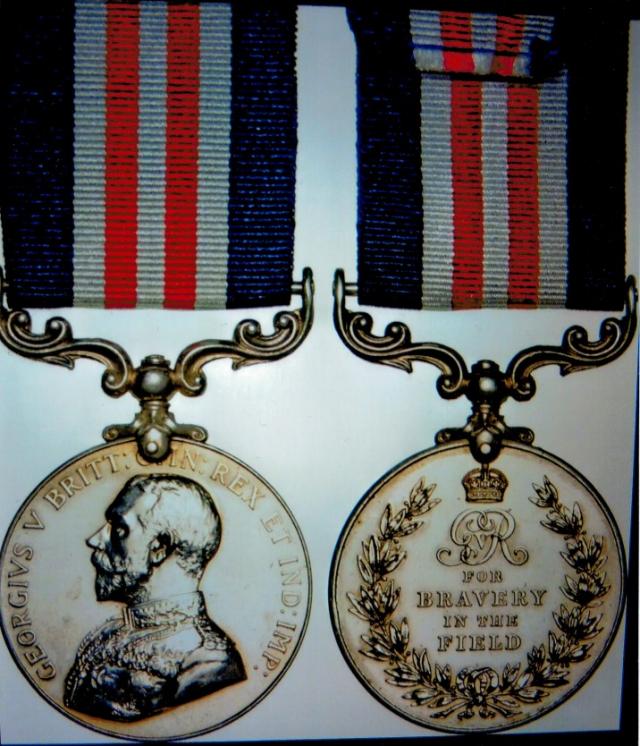
On 25 April 1915 Australian troops of the First AIF landed on the beach at Gallipoli Cove and created the endearing legend of the Australian and New Zealand fighting soldiers that is still a major part of Australia’s military history.
Facing incredible odds as the Turkish Infantry held the high ground, the Anzacs fought with courage and tenacity from the landing to the evacuation in December 1915.
There were numerous battles fought on the slopes of the peninsula during that occupation but one that stands out is the battle of Russell’s Top on the night of 7 August 1915 in which Warwick resident, Corporal George Howard, was awarded the Military Medal. George is another Anzac from the Southern Downs to receive this honour in World War I, and here is his story.
George was a young book keeper working in Warwick when the call went out to the nation asking for recruits to help defend the British Empire.
He was the son of Henrietta Howard of Pratten Street, Warwick.
George filled with patriotic fervour, enlisted into the Anzac forces ready to embark for the Dardenelles on 15 March 1915, at the age of 24. He became one of those legendary young men who stormed the heights at Gallipoli on 25 April 1915 with “B” Company, 20th Battalion, 5th Brigade. During the conflict of the Peninsula, George was involved in the heavy fighting against entrenched Turkish at the Nek, during the evacuation and it was here that he demonstrated extreme courage which saw him awarded the Military Medal.
This was recommended by the Commanding Officer of the 20th Battalion when he said:
“At Russell’s Top on the Nek, along with Lance Corporal Joseph Flecknel, held an advanced bombing post 8 yards from the enemy Front line trench, and continually bombed the enemy during the 10 hours preceding the final withdrawal. They remained after all our front- line trenches had been evacuated, to light time fuses on bombs, set to deceive the enemy. Both showed considerable endurance, ingenuity and pluck in maintaining normal bombing on Russell Top, where 300 bombs were thrown nightly”.
George did not have a good introduction to the war when he received a back injury during the Anzac’s evacuation from Gallipoli and was sent to France with the 57th Field Ambulance and admitted to the hospital at Rouen for his severe back injury. George was evacuated and later admitted to the Fifth Southern Hospital at Portsmouth, England, then on to the Number One Australian General Hospital for treatment.
After a period of hospitalisation, George re-joined his unit in France and by the end of May 1916, on the 15 May George was promoted to Corporal, and with his battalion, was on the move towards the Somme in July 1916.
On 26 July, George and his battalion were held up with fierce fighting near the village of Pozieres which was strongly fortified by German infantry and artillery. It was here that George was severely concussed by a motor bomb.
George was sent to a Casualty Clearing Starion and sent back to England for treatment for his wounds. In a letter to his mother from Branksmere Hospital in Southsea, England, and published in the Warwick paper on 4 November 1916, George writes and gives an insight to the horrors of the war. Here is an extract of his description of his experiences:
“I have really seen what war means. People in Australia do not understand and do not have the slightest idea what this war is like, and will not have it until it is all over. Of course, thousands of our best and bravest men will never return. It was on 26 July at Pozieres (a small village strongly held by the Germans and which our chaps had just taken after a very fierce struggle) that I met my “Waterloo” in the shape of a high explosive. The German shell blew me up in the air until I thought I was never coming down, because the next thing I remember was waking up in a dressing station behind the firing line on the next morning. It was 8 o’clock at night when I was wounded. Next morning when I came to, I was told I had very severe concussion, and was unable to move. I had shell wounds in the leg and arm. Being paralysed all over I had no pain. I would never have got out of the firing line if it had not been for the stretcher bearers. These are brave heroes, carrying wounded through shell and machine gun and rifle fire, until they cannot stand themselves”.
Once George’s wounds were dressed, he was put on a train bound for Rouen Hospital where he stayed among hundreds of wounded before being sent to hospital at Havre.
From there he spent time in hospital at Portsmouth before it was decided that Georges war was over and he was prepared to be repatriated back to Australia.
Now recovered from his wounds George was granted leave from the hospital on 31 October until his departure date on 24 November 1916.
However, prior to his departure back to Australia, George received the good news on the 9 December 1916, that he was to be awarded the Military Medal for his heroic action on the Nek at Gallipoli.
Corporal George Howard, Military Medal, departed England on board the HT “Wiltshire” bound for Australia, and after arriving back home he was medically discharged from the army on 23 January 1917.
George Howard was a brave soldier, who his country forever owes him a debt for the tragedy and chaos of the Great War and for the trauma and suffering he endured in his two years away.
George was one of those brave Anzacs who disappeared into the mist of history, and it was sad that research never uncovered a photo, or his life after his return. All that is known was that George was a Warwick boy who eventually passed away in Sydney at the age of 83 on 18 September 1964.






